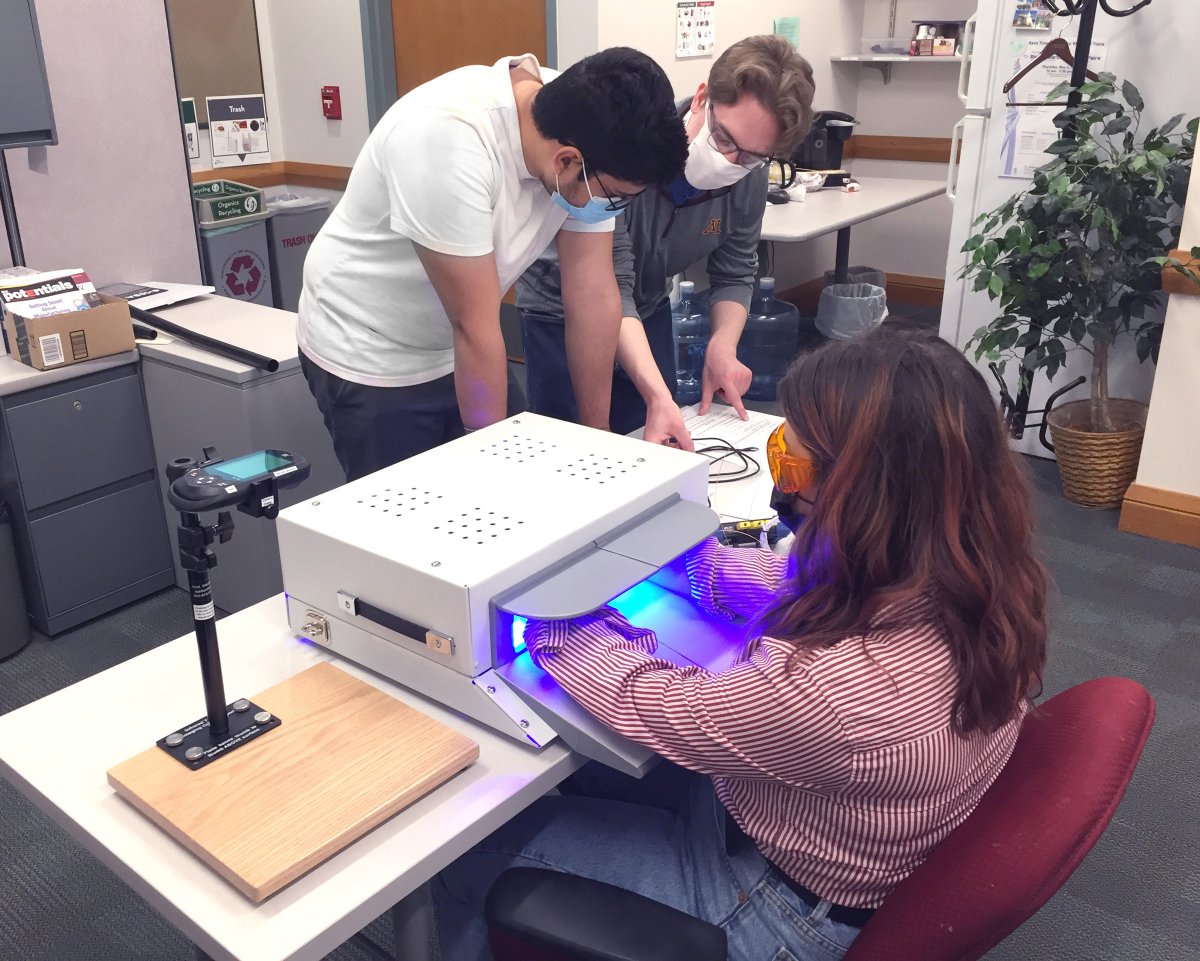Undergraduate student project explores potential light-based therapy for Raynaud’s phenomenon

April 17, 2024 — A pioneering group of undergraduate students and faculty member Steven Saliterman have developed a novel, non-pharmacologic therapy device that might someday help people with Raynaud’s phenomenon and disease, a blood-flow disorder.
The device shows so much promise for treating the condition that findings were recently published in Annals of Biomedical Engineering and clinical studies are planned to test the therapy’s efficacy.
The project started with a request from a physician for an effective, non-medicinal therapy that would treat his wife’s Raynaud’s phenomenon. The phenomenon reduces blood flow to areas of the body through blood vessel spasms in affected areas, often the fingers and toes. Symptoms can be triggered by cold temperatures, stress, and upsetting emotions.
With the goal of treating these symptoms, Prof. Saliterman; two undergraduate students, Jennifer Chmura and Brett Levac; and Jerry Molitor, an Associate Professor in the Division of Rheumatic and Autoimmune Diseases at the University of Minnesota Medical School, developed a low-energy blue light phototherapy device. They also worked with Vaughn Schmid, UMN Technology Commercialization, to identify and secure intellectual property on behalf of the University of Minnesota.
Biomedical engineering undergraduate students James Kerber and Kushal Sehgal, along with Levac, continued the development effort in Prof. Saliterman’s Medical Device Practicum course (BMEN 3151), with the intent of developing a suitable study instrument. Emily Wegner, a UMN undergraduate student studying physiology, also joined the team as they progressed to writing a study protocol and submitting their work for publication.
Previous studies in animal models had suggested that low-energy blue light stimulates the vasodilation of blood vessels through cellular signaling mechanisms. The team hypothesized that a similar blue-light therapy may mitigate the vessel spasms responsible for troublesome Raynaud’s symptoms.
The project team created four different iterations of the phototherapy device over many years, starting with simple foam-board mockups and progressing to full-scale subassemblies. The electronic circuitry was designed by the team and hand-wired to create various prototypes. One of the primary challenges for the research group was designing a low-level light source that produced the specific wavelength of blue light known to stimulate vasodilation.
Once the phototherapy device was complete, the project team received approval from the University of Minnesota Institutional Review Board (IRB) for their clinical study protocol.
During the Covid-19 pandemic, the team received special permission to complete over 20 trial runs of their clinical protocol as both healthy volunteers and research assistants, allowing the team to further refine the phototherapy instrument and study design.
On January 9, the team received a utility patent (U.S. 11,865,357) for light-based treatment devices and methods. Independent clinical studies will soon be conducted to determine the effectiveness of the blue-light phototherapy device in patients with Raynaud’s phenomenon.
Remarkably, the phototherapy device project began in 2017 and remains active, composed of an interdisciplinary team in the fields of biomedical and electrical engineering, intellectual property law, public health, rheumatology and internal medicine.
“It’s extraordinary that an undergraduate team of students has continued to work together for so long and achieve so much on such an important topic,” says Prof. Saliterman.
The team plans to continue refining the phototherapy technology, with the hopes that it can be used to develop marketable devices, such as a stationary treatment unit or wearable glove, that can help people with Raynaud’s phenomenon.
Read the paper and learn more about the project

